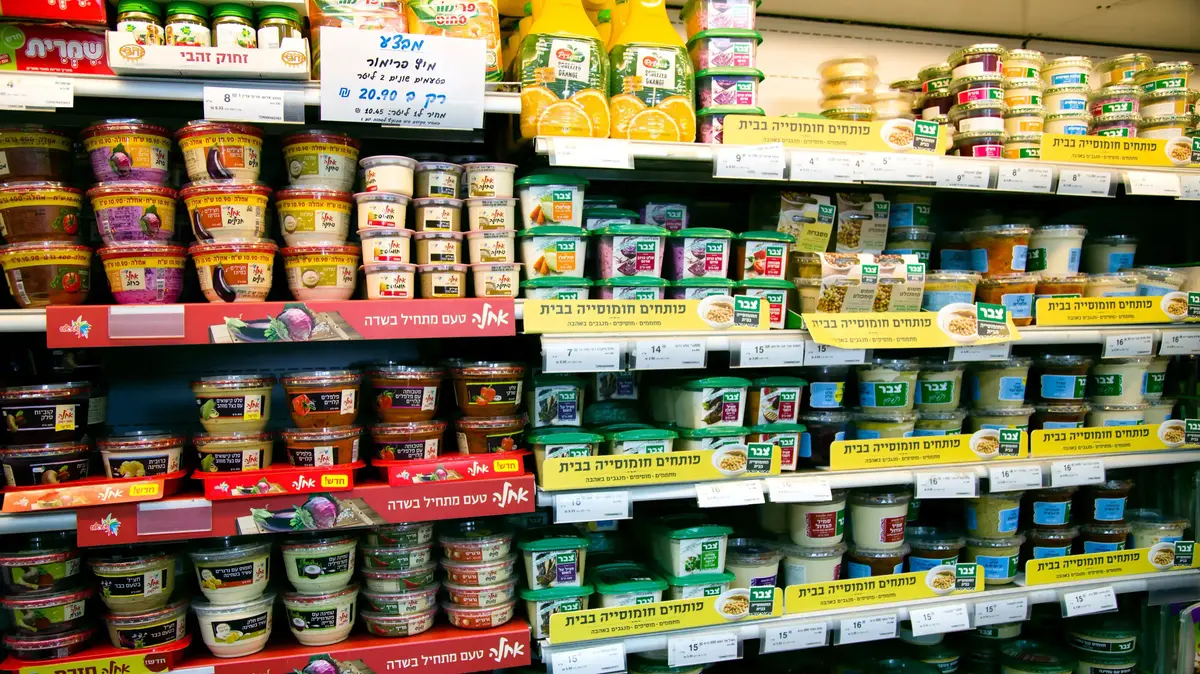The shopping experience is not only about the price, but paying 55% more for the exact same basket?! (Photo: ShutterStock)
If we had taken the problem of the cost of living very seriously and showed up for demonstrations in the last month, we might have been able to influence the balance of prices in the market.
Let's start close to home: since the corona crisis, the number of stores in the urban segment has grown at a rapid pace and they have captured respectable market shares among the large marketing chains, despite price differences that make "neighborhood" shopping much more expensive, sometimes (according to the test we conducted) up to 55%.
In any case, the growing competition on the neighborhood front has caused the price gap to shrink - from a gap of 25% in favor of the discount (large supermarkets outside the city centers) in 2021, to only 18% in the last test we conducted.
We conducted a comprehensive survey that included 25 national marketing chains, ranging from neighborhood chains to the general giant chains, while at the same time we also conducted a survey among sectorial chains, which cater to the ultra-Orthodox audience on one side and the non-kosher market on the other.
We reviewed a weekly basket with 51 items including cooking, baking, drinking, cleaning and grooming products, vegetables and fruits and hospitality products, the basket is of course the same between all marketing chains and includes the leading and most common brands in our shopping basket.
The gap between the cheapest basket in the survey and the most expensive basket is a difference of NIS 220, a gap of 55% - this is a significant gap even if it is a comparison between a discount chain and an urban chain.
The basket in the Rami Levy chain is NIS 395 compared to the AMPM chain which presents the same basket at a cost of NIS 615.
We checked the average of the baskets in each sales channel and the difference paid based on consumption habits, convenience and consumer preferences.
Survey box 6 090223 (photo: Walla! system, no)
The lowest average is found in the general chains with a basket average of approximately NIS 442.
The highest average is found in the neighborhood network with a basket average of approximately NIS 522, as mentioned - a gap of 18%.
In the ultra-Orthodox sector we will pay an average of NIS 462 for the same basket and in the non-kosher sector stores we will pay NIS 474, more than 7% higher than the general average.
We checked who charges a higher premium for the urban presence:
More in Walla!
Strategic location, spectacular view and luxurious apartments: the intriguing neighborhood being built in the center
In collaboration with Aora Real Estate
Chains that have discount branches and neighborhood branches - what are the differences within the same chain between the urban brand and the general brand? (Photo: Walla! system, without)
Our basket, from cheap to expensive, among the 25 chains surveyed (photo: Walla! system, without)
We looked at which chain came out the cheapest in the ultra-orthodox sector and what is the difference between the chain that presents the most expensive basket in this sector.
Chains and prices in the ultra-orthodox sector (photo: Walla! system, without)
The Usher Ad chain presents the cheapest basket in the ultra-Orthodox sector at about NIS 414 compared to a cheap and large chain with a more expensive basket by NIS 106, which is 25% more on the same basket.
Even among the chains in the urban segment, we found a significant gap of 33% between the Rami Levy chain in the neighborhood and the AMPM chain with a difference of more than NIS 153.
Urban (neighborhood) chains (photo: Walla! system, no)
In the non-kosher chains, the gap between the chains is more moderate, even if not eliminated - a gap of 7.30% between the Salah Dabah chain, which is cheaper, compared to the more expensive Tiv Taam chain in the segment, perhaps because of its location in quite a few more affluent urban centers in the central region.
Marketing chains in the non-kosher sector (photo: none)
The differences in the competition between the marketing chains in the general sector were surprising with a gap that reaches more than 26% between the cheap and the expensive chain, a difference of NIS 106 for the same basket.
Marketing chains and prices in the general sector (photo: Walla! system, no)
Although there are other variables that influence our choice in making buying decisions, where we buy and why the price parameter is still the most significant in consumer perception, but effects such as availability, convenience, accessibility, variety of products, shopping experience, service and personal constraints influence consumer decisions.
But - and this is a big but: note that even if you chose to make the purchase close to home, it is still worthwhile to compare the different chains, since the price differences are large - and add up to a large amount, certainly when it comes to the purchase that is made every week.
The writer is the CEO of the Retail Research Institute
Of money
consumption
Compare prices
Tags
Rami Levi
Shufersal
Yohannoff
victory
Tiv Ta'am
Cost of living







